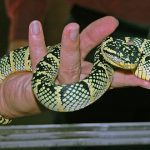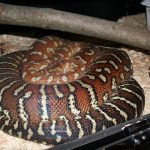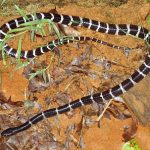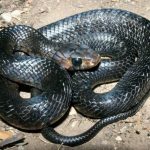Previously considered as non-poisonous, the Red-Necked Keelback snakes have been reclassified, following a couple of deadly attacks, as a dangerous species. They are widely distributed throughout the southern and south-east Asian countries. However, being rear-fanged, they need to give repeated bites to inflict fatal doses to humans.
| Kingdom |
Animalia |
| Phylum |
Chordata |
| Class |
Reptilia |
| Order |
Squamata |
| Suborder |
Serpentes |
| Family |
Colubridae |
| Subfamily |
Natricinae |
| Genus |
Rhabdophis |
| Scientific Name |
R. subminiatus |
| Length |
27.5 to 35.5 in |
| Color |
Greenish hue with red and yellow regions near the head |
| Distribution |
India (West Bengal (Jalpaiguri district), Assam, Sikkim, Arunachal Pradesh (Chimpu, Itanagar – Papum Pare district)), Mizoram (Selesih, World Bank Road), Indonesia (Sumatra, Borneo, Java, Sulawesi, Thailand, Vietnam, Cambodia, Laos, Burma, West Malaysia, Bhutan, Bangladesh, Nepal, China (Yunnan, Guangxi, Guangdong, Fujian, Hong Kong, Hainan), Bangladesh, Hong Kong, LaosMyanmarNorth and South Vietnam |
| Habitat |
Near ponds and marsh areas |
| Diet |
Frogs, fish |
| Venom Fact |
Venomous |
| Mode of Reproduction |
Oviparous (egg laying) |
| Clutch Size |
7 to 15 eggs |
| IUCN Conservation Status |
LC |
Red-Necked Keelback Pictures Gallery
-
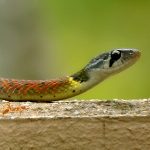
-
Red-Necked Keelback Images
-
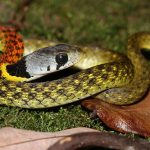
-
Red-Necked Keelback Pictures
-
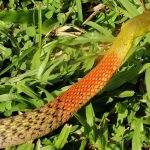
-
Red-Necked Keelback Snake
-
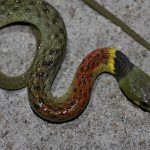
-
Rhabdophis Subminiatus
-
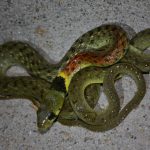
-
Pictures of Red-Necked Keelback
-
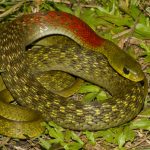
-
Red-Necked Keelback Photos
-
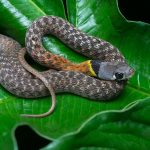
-
Red-Necked Keelback
-
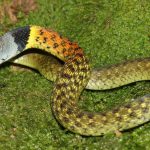
-
Images of Red-Necked Keelback
-
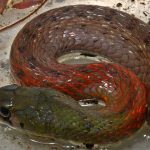
-
Red-Necked Keelback Care
-
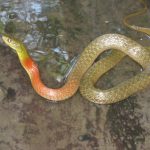
-
Red Necked Keelback Snakes












